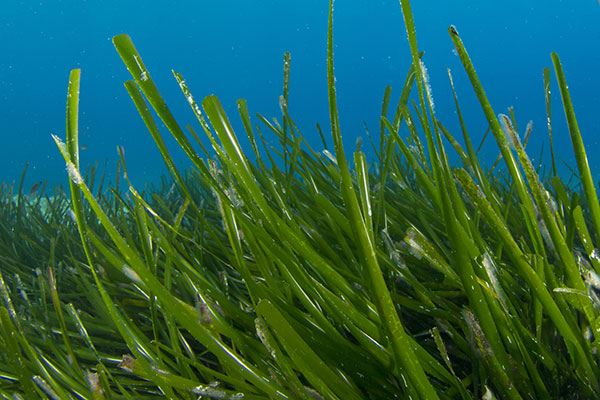Important Facts about Seagrasses
Key News ContributorJuly 1, 2017

Important Facts about Seagrasses
Seagrasses are flowering plants that live submerged in the sea. There are 50 – 60 seagrass species worldwide. Seagrasses are major structuring components of some of the most productive marine ecosystems. In Florida, there are seven species of seagrasses.
Some are very common like turtle grass, while another, Johnson’s seagrass, is an endangered species and found only in northern Biscayne Bay. Reports of seagrass losses and the rates of decline are increasing dramatically (Waycott et al. 2009).
Construction of docks, piers and seawalls, dredging for navigation, and traffic by foot and boat all cause significant damage to seagrass beds. Nutrient pollution is also a significant threat to the survival of seagrasses. Many of these factors are avoidable.
A few conservation measures you can take, as residents, are not walking on seagrasses unless absolutely necessary, be wary of tides and water depths to avoid boat groundings, and always use phosphate and nitrate free detergents, pesticides and fertilizers.
A plant is called a seagrass if it:
- Grows when fully submerged
- Is securely anchored by a root system
- Is adapted to live in salt water
- Has flowers that are pollinated under water
- Can compete with other organisms in the sea
Seagrasses have several habitat requirements including:
- Sediment in which to root
- High levels of light
- Clear water with low levels of nutrients
- Low levels of physical disturbance
- Stable salinity
- Sufficient oxygen levels
Why should we value our seagrass beds? Seagrasses play key roles as:
- Primary producers: tropical seagrass beds are among the most productive ecosystems, rivaling agriculture crops like corn and soybeans. seagrasses themselves are food for a large number of herbivores including urchins, manatees, and sea turtles. Green sea turtles are a particularly important consumer of seagrasses.
- Sediment stabilizers: seagrasses efficiently hold sediments in place, preventing resuspension and movement of sediment deposits.
- Nutrient processors: Seagrass beds absorb and transform nutrients in the marine environment.
- Habitat: Seagrass beds are important habitat for adult organisms, vital in the life cycles of some species, and active hunting grounds for other species. Many ecologically and economically important species are dependent on seagrass beds during juvenile phases. Adults of many species hunt in seagrass beds, including snappers, groupers, and sharks.
How much can one soccer field of seagrass do for the environment?
- Process a year’s worth of treated sewage from 780 people
- Absorb 7,500 miles worth of pollutants omitted by an automobile
- Generate $35,000 per year in ecological services


